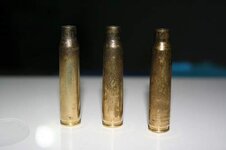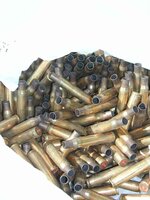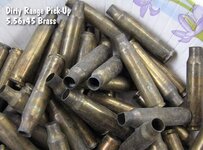- Messages
- 413
- Reactions
- 165
I'm new to reloading, but have always cleaned up my brass from a shooting area when I have used it. I even clean up any that others have left behind, because of this I get a lot of brass that has been sitting outside for who knows how long. A lot of this brass has surface discoloration usually a black to dark brown splotchy appearance, maybe cloudy is a better description. I started out with a small ultrasonic unit and while it would clean the brass great I would still have this discoloration only now extra shinny. I have since got a tumbler and have been tumbling for 4-6 hours, while it takes off a lot of this there is still some discoloration after tumbling. Is this brass safe to use? I don't see any pitting, and if I examine the inside of cases it doesn't seem that the discoloration goes all the way threw.
I've tried goggling this and looking on other websites but there isn't a lot of pictures of what is OK and what isn't. Some places say this is bad because its leaching of zink or copper, some places say not to worry and its discoloration. Again with no pictures to let me know which is which.
As of right now I have been sorting it into a maybe use pile with stuff that is coming out with only a little of the splotchieness left and a don't use pile consisting of very shiny cloudy brass. I know this will be easier with pictures so I will try to get some up this weekend.
I've tried goggling this and looking on other websites but there isn't a lot of pictures of what is OK and what isn't. Some places say this is bad because its leaching of zink or copper, some places say not to worry and its discoloration. Again with no pictures to let me know which is which.
As of right now I have been sorting it into a maybe use pile with stuff that is coming out with only a little of the splotchieness left and a don't use pile consisting of very shiny cloudy brass. I know this will be easier with pictures so I will try to get some up this weekend.















